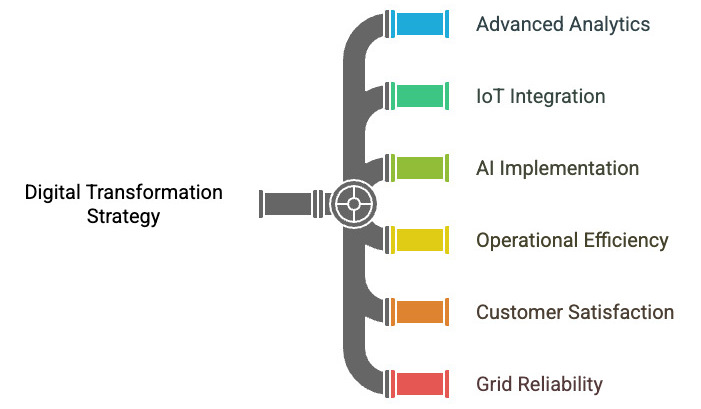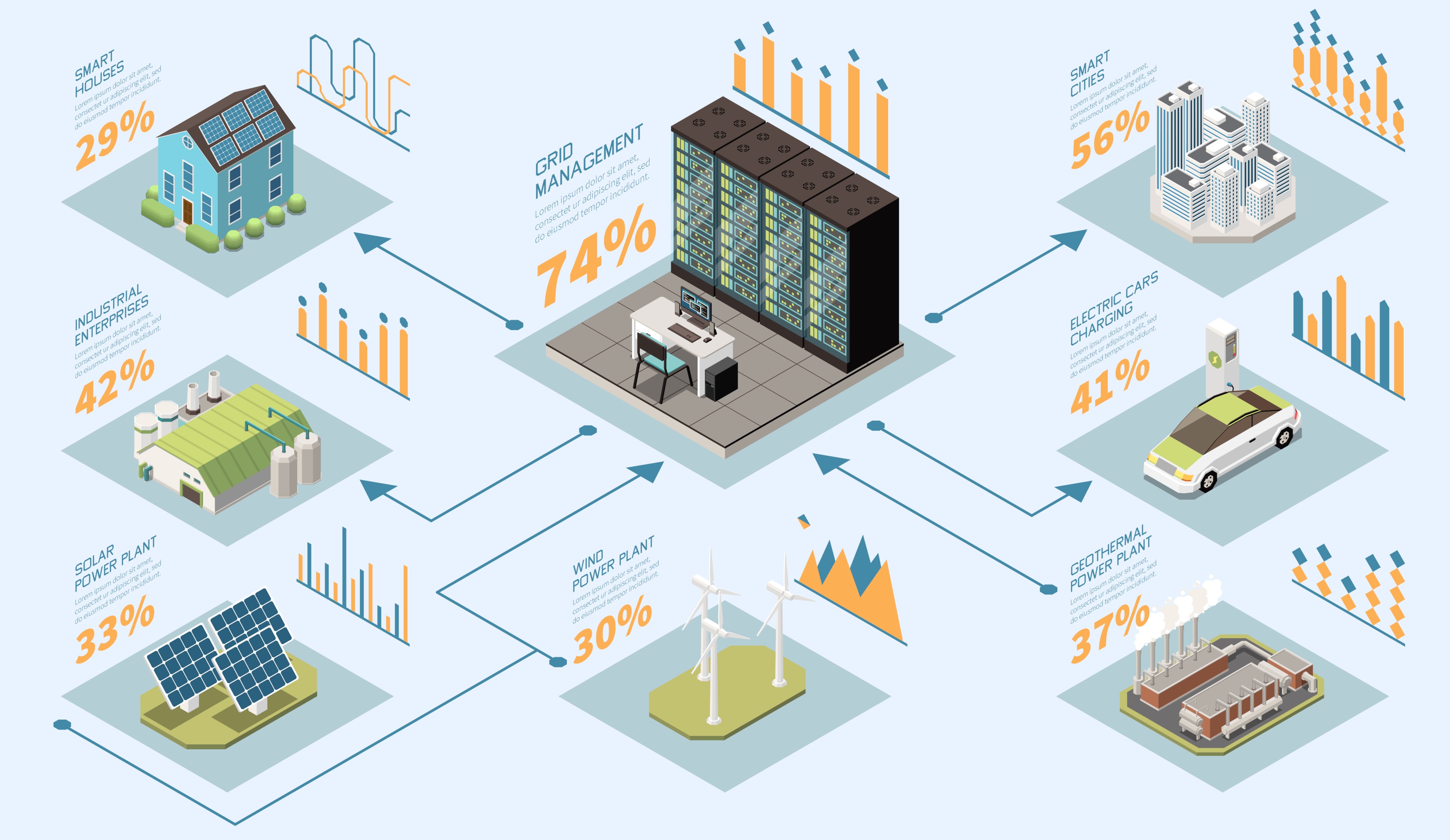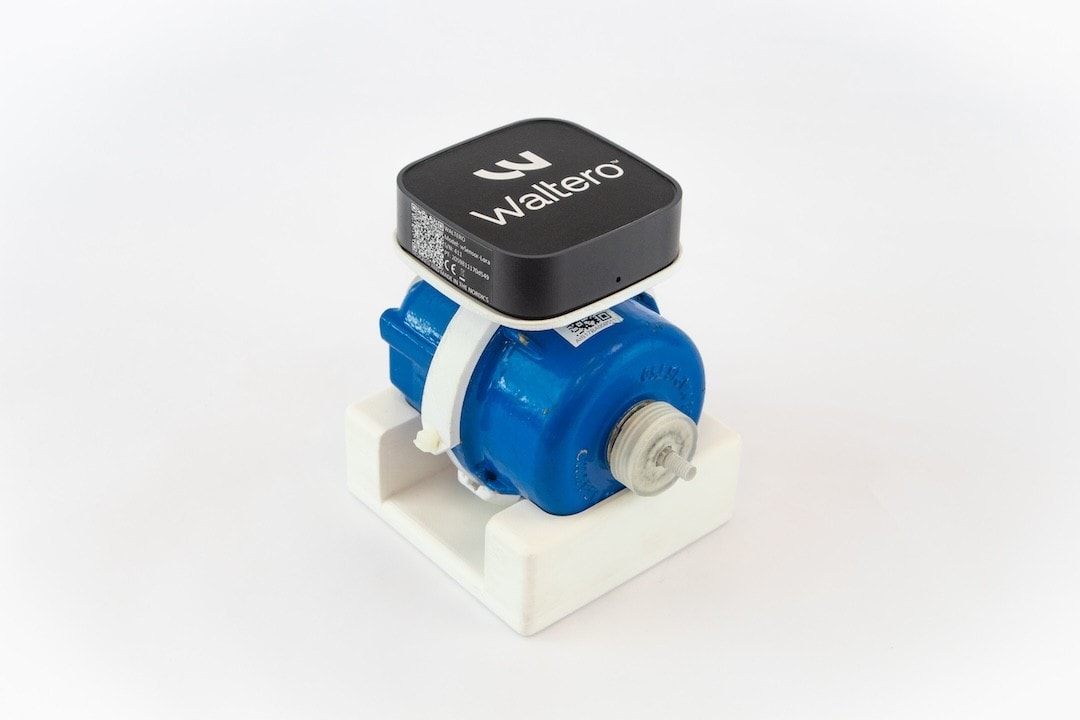Mastering Digital Transformation Strategy: IoT & Smart Grid Tech

Anders Carlberg
Founder & Director of customer successIntroduction
A digital transformation strategy is essential as the energy sector undergoes rapid change. IoT and smart grid technologies are leading this shift, enabling utilities to modernize infrastructure, boost efficiency, and meet the rising demand for sustainable, intelligent energy systems.
At Waltero, we’ve witnessed firsthand how IoT in utilities helps organizations navigate the complex challenges of sustainability and renewable integration.
This article explores key steps to build a focused digital transformation strategy that leverages smart technologies to drive real operational and customer value.
What is Digital Transformation Strategy in the Utility Industry?
Digital transformation strategy in the utility industry signifies a fundamental shift in how utilities operate and deliver value to their customers. It involves the comprehensive integration of digital technologies such as advanced analytics, IoT, and AI into all facets of the business. This transformation enables utilities to enhance operational efficiency, boost customer satisfaction, and improve grid reliability.
By leveraging digital technologies, utilities can better manage distributed energy resources, optimize energy distribution, and provide personalized customer experiences.

For instance, advanced analytics can predict maintenance needs and optimize energy transition and flow, while IoT devices offer real-time monitoring and control of grid components. AI can further enhance these capabilities by enabling predictive maintenance and automated decision-making processes.
In essence, a digital transformation strategy allows utilities to transition from traditional reactive operations to proactive and predictive data-driven strategies. This shift improves the reliability and efficiency of the electric grid resiliency, also empowering them with more control and insight into their energy usage, distributed energy resources, and fostering a more sustainable and customer-centric energy ecosystem.
Understanding the Need for Change
The energy sector is undergoing rapid transformation, driven by the urgent need for sustainability and grid resilience. For utilities, digital transformation is no longer a choice—it’s essential to stay competitive and operate smarter.
The grid remains critical to modern life, and intelligent technologies offer a path to reliable delivery, efficiency, and reduced waste. Outages and inefficiencies carry real economic and social costs, making investment in future-ready solutions vital.
Progress requires collaboration. Government officials, business leaders, C suite (C leaders), asset owners, and technology partners must work together to adopt agile strategies and scalable innovations that power a more resource-efficient world.
The Essential: 7 Key Steps on How to Build a Digital Transformation Strategy
Developing a successful digital transformation strategy in the utility sector requires a holistic, cross-functional approach. It starts with clearly defining the business goals, such as improving customer satisfaction, reducing outages, and boosting operational efficiency. A key step is establishing measurable KPIs, including grid reliability, cost savings, and energy efficiency, to track progress and guide decision-making.

The strategy should also specify the technologies needed to achieve these outcomes, such as smart meter IoT, AI, and advanced analytics. Just as important is fostering collaboration across departments and with external partners, ensuring data flows freely and the transformation remains integrated, agile, and aligned with long-term objectives.
1. Start with the Why
Digital transformation is often misunderstood as a tech-first initiative, but real success starts with strategy. Too many organizations implement tools before defining the outcomes they want to achieve. That approach leads to disjointed results and missed opportunities.
The most effective digital transformations are rooted in long-term business objectives—goals that stretch five to ten years into the future. This shifts the focus from the tools themselves to the value they’re meant to create.
A clear business case, supported by measurable outcomes, should guide the transformation from the very beginning. When digital strategy aligns with organizational priorities, it becomes a powerful enabler of growth, efficiency, and innovation.
2. Prepare for Culture Change
Digital transformation isn’t just about systems—it’s about people. Cultural alignment is essential, and that starts with visible commitment from senior leadership. In recent years, the shift toward ownership of digitizing utilities has accelerated, confirming that it’s a critical component and transformation must be led from the top.
Expect resistance, and plan for it. Change often brings skepticism, which is why cross-functional teams are key. Bringing in voices from operations, IT, engineering, and even customer-facing roles ensures that the strategy is grounded in reality. These internal champions help drive momentum and reinforce a shared sense of purpose.
3. Start Small, Think Big
Digital transformation is a journey, and early wins matter. Identifying a pilot project with fast, measurable results helps demonstrate value and builds support across the organization. The best early projects are those that are both strategic and scoped tightly enough to show ROI in six months or less.
Using a modular approach—starting in one facility or department, allows for quick iteration and smoother scaling. Once a use case proves successful, it can be replicated or expanded to other areas with greater confidence and impact.
4. Modernize Processes, Not Just Tools
Technology alone doesn’t drive transformation, how it’s applied does. Simply overlaying new tools on outdated processes often leads to costly inefficiencies. For technology to create real value, it must be accompanied by rethinking workflows and operational models.
With a clear strategy in place, digital tools like IoT, Edge AI, machine learning, robotics, and cloud platforms become enablers of real change. The goal is not just digital adoption, but smarter, more resilient operations that align with your broader business objectives and the optimization of utility data management.
5. Choose the Right Partners
Technology partners and technical expertise should be selected not just for their solutions or knowledge, but for their ability to support your long-term goals. Key considerations include scalability, industry expertise, integration capability, and alignment with your digital roadmap.
Avoid “spot solutions” that solve isolated issues but can’t scale across the organization. Instead, focus on partnerships that bring both the tools and the know-how to accelerate results and reduce friction along the way.
6. Build in Feedback and Flexibility
Every digital initiative should be tied to clear KPIs and supported by a robust feedback loop. Tracking progress, learning from challenges, and being open to adjustments ensures the transformation stays on course, even as business needs evolve.
Agility is critical. A successful digital strategy includes regular checkpoints to reassess goals, measure results, and pivot where necessary. The ability to adapt and improve over time is what separates effective digital transformation from stalled efforts.
7. Scale with Purpose
As early successes validate your approach, the next step is scaling—both horizontally across operations and vertically into more complex systems. Scaling doesn’t just expand the benefits, it embeds digital capabilities deeper into the organization, paving the way for long-term change.
Digital transformation isn’t a destination—it’s a dynamic process. But with the right foundation, strategic execution, and commitment to continuous improvement, it becomes a powerful driver of performance, resilience, and innovation.
In summary, fostering a culture of innovation and agility is crucial. Utilities must be prepared to adapt to new technologies and market conditions quickly. By focusing on these elements, utilities can build a robust digital transformation strategy that drives business value, provides insights on distributed energy resources, enhances data-based decision making, all while conducting sustainable practices.
Understanding Smart Grid and IoT for Digital Transformation Strategy in Utilities
Smart grids represent the evolution of traditional energy systems into dynamic, data-driven networks. By integrating IoT-based smart metering system, utilities can collect real-time data from across the grid—transformers, substations, and end-user points—enabling faster decision-making, improved reliability, and more efficient resource use.
These connected systems empower utilities to predict demand, identify faults before they escalate, and respond proactively to disruptions, making the grid modernization not just smarter but also more resilient and sustainable.

Globally, utilities are heavily investing in smart grid modernization and IoT-based solutions. By 2030, IoT in utilities market is expected to surpass $100 billion, nearly doubling from today’s $47.5 billion.
This growth reflects the increasing reliance on digital technologies to drive efficiency, sustainability, and resilience in energy and water infrastructure, all while maintaining certified quality standards.
Waltero’s Contribution to Digital Transformation
Waltero is helping shape this intelligent energy future through a tightly integrated ecosystem of hardware, software, and cloud intelligence.
The W-Sensor remotely captures high-fidelity data from the field, enabling precise monitoring of operational conditions without the need to interrupt ongoing processes within the utility.
Paired with the W-Solution, our software suite, the system applies advanced analytics and computer vision to detect anomalies and optimize maintenance cycles.

At the core is Mímir, our cloud platform that leverages machine learning and predictive maintenance algorithms to turn raw data into actionable insights.
Together, these technologies enable utilities to digitize, without the hassle and cost of replacing old meters, make smarter decisions, reduce downtime, and extend asset life—delivering real impact in the drive toward a more sustainable and resource-efficient smart world.

Explore our Exploratory Kit—it’s the place to start setting up your strategic investment for an efficient digital utility.
Software Development for Better Performance
Software development plays a vital role in the digital transformation of the utility sector, enabling tailored solutions that optimize energy distribution and manage distributed resources more effectively. Scalable, secure, and user-friendly software can integrate with existing systems to boost operational efficiency, automate routine tasks, and deliver real-time insights, especially when powered by Edge AI, computer vision, and IoT technologies.

Beyond operations, advanced software enhances customer engagement by offering tools for personalized energy management and real-time usage updates. This empowers users and fosters stronger customer relationships. Ultimately, investing in smart software solutions helps utilities reduce costs, improve performance, and stay competitive in a rapidly evolving energy landscape.
7 Key Questions to Ask When Building a Digital Transformation Strategy
When embarking on a digital transformation journey, utilities should ask themselves several key questions to ensure a comprehensive and effective strategy:
What are our business goals and objectives for digital transformation?
Clearly defining the desired outcomes, such as improved customer satisfaction, reduced power outages, and enhanced operational efficiency, is essential.What are the key performance indicators (KPIs) to measure success? Identifying KPIs helps track progress and ensures accountability. These could include metrics on grid reliability, customer satisfaction, and cost savings.
What advanced technologies are required to achieve our desired outcomes?
Determining the necessary technologies, such as IoT, Edge AI, and advanced analytics, is crucial for achieving the set goals.How will we prioritize data sharing and collaboration across departments and with external partners?
Ensuring seamless data sharing and collaboration is vital for an integrated approach to digital transformation.What is our approach to software development and integration with existing systems and infrastructure?
Developing scalable, secure, and user-friendly software solutions that integrate with current systems is key to optimizing performance.How will we ensure the security and scalability of our digital solutions?
Implementing robust cybersecurity measures and designing scalable solutions are essential for long-term success.What is our plan for change management and employee training to ensure a smooth transition to digital transformation?
Preparing employees for the transition through training and change management strategies is crucial for effective implementation.
By addressing these questions, utilities can create a well-rounded, successful digital transformation strategy that drives business value, improves customer satisfaction, and enhances grid reliability.
Real-World Success: Smart Grid and IoT Implementations
Here are a few real-world examples covering the effective integration of digital transformation towards a smart city and a digital future.
Italy’s Smart Grid Innovation (Enel Telegestore Project)
Italy’s pioneering smart grid deployment by Enel, involving 44 million smart meters, significantly reduced energy losses and theft while improving consumer transparency. Today, it’s a global benchmark in successful smart grid deployments.
UK’s Smart Meter Rollout Reduces Carbon Emissions
The UK’s extensive smart meter deployment now prevents over one million tonnes of CO₂ annually, significantly reducing the carbon footprint and equivalent to removing one million cars from the road. This illustrates how IoT-driven insights lead directly to substantial sustainability impacts.
India’s Ambitious IoT-Based Metering
India is investing heavily in smart grid technology, aiming to install 250 million IoT-enabled smart meters by 2025. This massive rollout is projected to significantly reduce electricity theft and enhance billing accuracy, driving financial and environmental sustainability.
Smart Water Management in Barcelona
Research shows that Barcelona’s smart water metering initiative, integrated with the city’s broader smart infrastructure, drastically improved leak detection and reduced water wastage, demonstrating IoT’s versatility across utility types.
Conclusion
At Waltero, we firmly believe that developing digital transformation strategy by embracing smart grid technology and IoT is not just beneficial—it’s essential. These technologies offer a powerful way to manage resources sustainably, reduce operational costs, and meet stringent regulatory demands. Utilities that act decisively now will be well-positioned for a resilient, efficient, and sustainable future.
If you’re ready to explore how IoT and smart grids can drive digital transformation for your utility, we encourage you to start your journey today.
%3Aformat(webp)&w=3840&q=75)



